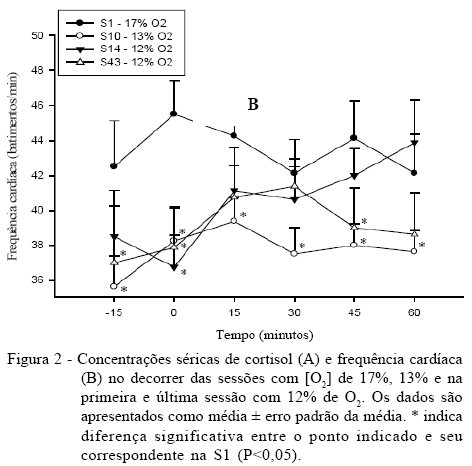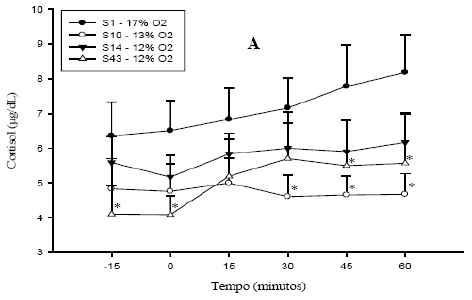The cortisol levels, glycemic response and insulin secretion were evaluated in non-exercised horses submitted to sessions of normobaric hypoxia. Healthy adult horses (n=8) were selected after physical examination and underwent an intravenous glucose tolerance test (0.5g kg-1) (IVGTT). Blood samples (n=11) were collected between 0 and 180 minutes after glucose administration to evaluate glycemic response and insulin secretion. Then, they were exposed to 1-hour hypoxia sessions twice a day, reaching a total of 43 hypoxia sessions, with [O2] decreasing from 17 to 12%. Heart rate and serum samples to measure cortisol were collected before and every 15 minutes during the sessions 1, 4, 6, 8, 10, 14, 22 and 43. The IVGTT was repeated at the end of the study. The serum cortisol levels were higher in session 1 (S1) (17% O2) when compared to the levels of S10 (13% O2) and S43 (12% O2) (P<0.05). The glycemic curve in resting healthy horses is not altered by exposure to 43 normobaric hypoxia sessions. The increase in insulin secretion, followed by decreased heart rate and serum cortisol suggest an adaptation of the horses to the hypoxia model used.
horses; intermittent hypoxia; glycemia; stress; altitude




